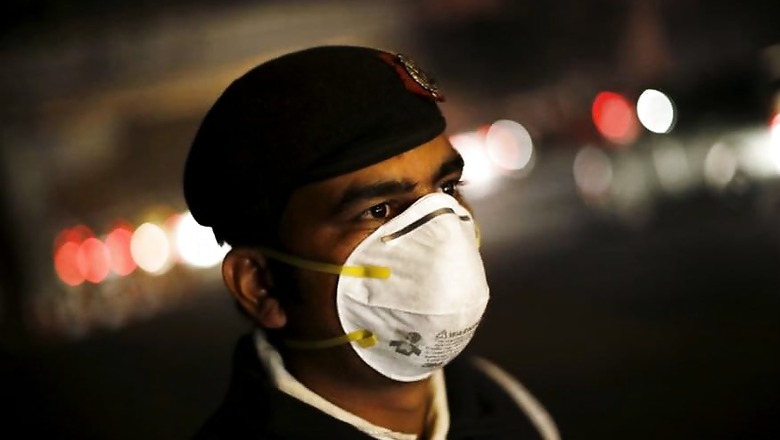
views
New Delhi: Any kind of rapprochement – however unlikely – between Lieutenant Governor Najeeb Jung and Chief Minister Arvind Kejriwal could come, literally, as a breath of fresh air for Delhiites.
Meanwhile, the national capital’s air quality continues to nosedive with the last ten days oscillating from ‘poor’ to ‘very poor’, as measured by the Central Pollution Control Board (CPCB).
The Air Quality Index (AQI) for Thursday stood at 355, which, according to the US Environmental Protection Agency, is “hazardous” and the standard operating procedure would be to instruct that “everyone should avoid all physical activity outdoors”.
Senior officials in the Environment Pollution (Prevention and Control) Authority (EPCA), told News18 that because of the “internal feud” little work had happened, despite experts giving plans and guidelines to the government well in advance.
One official said that no work was going to happen when some bureaucrats felt they had a “godfather” protecting them, and others were transferred away from posts too soon for them to make changes.
“We hoped that by this winter they would be able to check the risings pollution levels. But we’re waiting to see a clear implementation strategy with known timelines and accountability,” says Anumita Roy Chowdhury, head of the air pollution control unit at the Delhi-based think tank Centre for Science and Environment (CSE), which frequently works with the government.
Chowdhury said any action to curb pollution levels in Delhi has come so far only after court intervention.
The task force on air pollution and solid waste management of the Delhi Government had its first meeting on October 24, chaired by state Health and PWD minister Satyendra Jain.
On Wednesday, the team sat down with all stakeholders: the municipal corporation, the Delhi Development Authority (DDA), the Delhi Pollution Control Committee.
On Thursday, the government, following a Supreme Court directive, said they had “set in motion the process for the installation of Radio Frequency Identification Devices and Weigh-in-Motion machines” to regulate commercial vehicles entering Delhi to check air pollution. This comes a week after the NGT directed the government to take all bodies in board, plan for the coming season, and present that to court on November 16.
The current head of the Delhi Pollution Control Committee (DPCC) Chandrakar Bharti recently made headlines for skipping meetings with the health minister in his capacity as the health secretary.
News18 tried multiple times to reach Bharti but he refused to respond. A detailed email questionnaire sent in this regard went unanswered.
Satyendra Jain, head of the air pollution task force, refused to comment for this story.
Though the air quality had lifted up thanks to a full monsoon this year, by September last week, as the wind speed dropped, levels of particulate matter in the air (PM2.5) escalated.
Yet, EPCA and CSE, that works along with the court body, has no clarity on what the government is planning to do, especially after studies have shown that the “Odd-Even” scheme may have reduced traffic congestion but had only negligible impact on pollution levels.
A CPCB official defended his organisation saying it had issued directives to the DPCC soon after the winter of 2015-2016. However CSE, which is also a part of EPCA, argued these directives were neither well-thought out nor practical. “They want to install air pollution filters in vehicles in 60 days, something we’ve tried for 20 years,” said Polash Mukherjee, research associate with CSE’s air pollution control team.
The CPCB recommendations for road dust management included more fountains and vacuum cleaning. Both Mukherjee and EPCA chairman Dr Bhure Lal said Delhi roads were so unsuited to vacuum cleaning that the idea had to be junked. The three machines, acquired during the Commonwealth Games, were meant for flat areas such as campuses, and their speed was so slow they caused traffic jams. Nor does the city have water resources for more fountains.
“The Delhi government had a good comprehensive plan for road management where they want to green dividers too, but that’s stalled,” said Mukherjee.




















Comments
0 comment